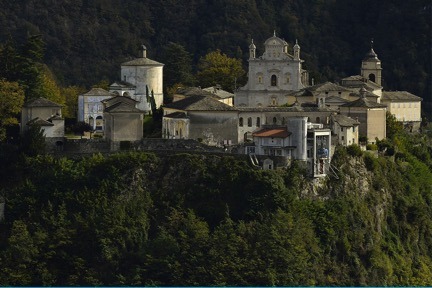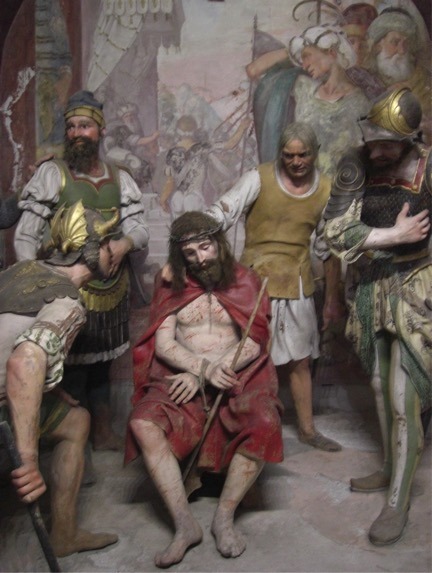#Sacri's Obscure Interests
Text
Emotional blackmail...
There has been talk of threats, blackmail, perhaps intimidation, warnings, ultimatums, leading to commination. Those in and of themselves are enough to scare most, especially if what is most sacry is being used against them. This has been discussed previously when things happened that weren't expected. Something has sat on my mind and it won't let go...emotional blackmail.
This is a term used more in psychology with regards to relationships. Let's suffice to say there are all kinds of relationships from intimate ones, some with families to business related ones. In each senerio negative tools can be used to gain the upper hand. To get what they want. One way is emotional blackmail; fear, obligation, guilt(FOG; an acronym for "fog" which confuses, obscures a situation). These are the dynamics a controller uses to control. The term in my book, used loosley, but accurately in this case.
One uses such to promote one's own self interests (controller). For whatever reason or threat the person (controlled) is plyed with obligation and guilt to assure there is no resistance. This is done with the controller wanting something from another person; right, wrong, indifferent. It could be for a lot of reasons; safety, being valued, appreciated...sounds like promo to me. The problem is not what they want, it is how they go about getting it. The tendency is towards being unkind, callousness, cruelty, insensitivety to others needs or wants.
The person (controlled) can become a prisoner, captive, evan a pawn forced to act under the threat, pressure. There are demands that involve personal integrety and effect life decisions.
The patterns and/or characteristic of this person, controller, is seen in the addictive personality. Addicts often believe to achieve "happiness and success" they must be in control, often learned from chilhood, like love that is conditional. It is also seen in people with certain mental illnesses; narcissism, boarderline personality, to name a couple. This comes very close to abusive power and control. There are also persausive and non persuasive arguments with regards to manipulation, premmeditation and maliciousness with regards to emotional blackmail. Each case is an individual statement as to its intent. (Source: Wikapedia and BPDFamily by R. Johnson).
There is alot more content that can be explained, realized. Even suggestions on how to stop it. I feel that is far past my own thoughts and narratives. My focus was to recognize, realize an aspect of a toxic situation. A situation that has gotten out of hand if pictures are of any value! I do however believe in this situation there is only one solution...to get out by any means possible(most have to define individual what is best way out). Leopards do not change their spots. Humans may learn new behaviors even change attitudes. Their core remains the same.
So how does this coralate/parallel to the existing situation...Through a contract a connection was created. Toxic yes. But a bad connection is a relationship none the less. Relationship is defined as; the way in which two or more concepts, objects, or people are connected, or the state of being connected(dictionary). Relationships do not need to even mean people it can be objects. This so struck a cord. Anyone want to conjucture how many times the protagonist has felt like an object when they are in the same vacinity as his toxic team, and that includes beardwify. Right now my guess is all the time. My guess the emotional blackmail is so prenounced at this point their actions are prefunctory, automated... To the point they mentally remove themselves from their body and becomes that robotic object. It appears some people really like their games. To play emotional roulette in the emotional blackmail scheme. No it is not ok. It just is.
For those watching, support and being there is what can be offered at this point in time. To know "You Are Not Alone". The "Me Too" era has so many implications on this stage. The fight to eradicate this behavior is not only necessary it is requied as all human beings have the right to life, liberty and the persuite of happiness. Happiness includes loving who you choose without fear of reprisal to any degree! And yes it will come, when those fighting for their very existance...identity can walk free to be. The fighters and supporters must stay vigilant. Because the one thing these perpetrators want is to ware down their pray. It cannot and will not stand...the fight is not of just one or by just one. All human beings must play a part and demand the righs afforded to all! !
16 notes
·
View notes
Photo




New Writer Favorite Artwork Fact File
To welcome our new IASblog writers, we thought it would be wonderful if they introduce themselves by sharing their favorite work as one of our “Favorite Artwork Fact Files (FAFF). Our second FAFF comes from Maggie Bell.
What is your favorite artwork? The Sacro Monte di Varallo, an Observant Franciscan site founded in the late fifteenth century to recreate the experience of being a pilgrim in the Holy Land.
…and your favorite detail? I love the view in the Bethlehem complex through a carefully placed opening in a grate, through which the viewer can see one of the Magi removing his crown.
Why? I visited Varallo while I was conducting research for my Master’s thesis. I remember the trip from Santa Barbara to the entrance gate of the Sacro Monte being a long and difficult one. When I arrived I imagined that I felt similarly to the many other pilgrims who had come to Varallo for various reasons over the centuries. The site itself is a bit overwhelming, and was clearly meant to be understood with one’s whole body. The paths take visitors through trees that obscure one’s view, and passing from the outside heat (I was there in August) to the dark quiet cool inside the ”temples” requires visual and physical adjustment.
The Sacro Monte di Varallo was founded in 1491 by the Observant Franciscan friar Bernardino Caimi. Bernardino had returned to Varallo, a small city close to Lago Maggiore, after serving in the Franciscan-controlled territories in the Holy Land. Bernardino wanted to create a more accessible option for pilgrims in the form of a Sacro Monte, or “Holy Mountain,” designed to mimic the pilgrimage experience down to the very measurements of particularly important sacred sites. For instance, the recreated Nativity Grotto at Varallo looks very similar to the actual grotto in Bethlahem, and the replicated stone covering Christ’s sepulcher was allegedly based on measurements taken by Franciscans who had seen the original. Visitors can still follow the stations of Christ’s suffering along the Via Dolorosa leading up from the town of Varallo to the top of the Sacro Monte, which match the distances demarcated on the original road in Jerusalem.
In the early to mid-sixteenth century the pilgrim’s experience was given added vivacity through the addition of wooden and terracotta polychrome sculptures representing figures from the life and Passion of Christ, almost all of which were created by Gaudenzio Ferrari (1471-1546) and his workshop. The earliest known sculptural grouping is the Pietra dell’unzione slightly smaller than life-size and made entirely of painted wood. Later figures, like those in situ today, have a heightened level of realism and wear fabric clothes and wigs made of human hair. (In fact, you may donate your hair to the Sacro Monte, as long as it isn’t dyed.)
By the mid-sixteenth century the Sacro Monte had fallen into disrepair, though interest in the site was revitalized thanks largely to Carlo Borromeo, Archbishop of Milan and a powerful voice during the Counter-Reformation. Borromeo was a devotee of the Sacro Monte, often spending the night praying in the Sepulcher next to a wooden figure of the dead Christ. Between 1565 and 1569, just after the Council of Trent had sanctioned the use of images for devotional purposes, the architect Galeazzo Alessi (1512-1572) designed elaborate new “temple” structures for the sacred sites, as well as glass enclosures, or vetriate, for the sculptural groups. This fundamentally altered the interactions between pilgrims and images, as they could no longer move among or touch the figures but rather needed to view them through glass from a distance. Visitors today are still separated from these figures, and their engagement is further controlled by openings in the barriers, which frame specific views of the scenes within.
The Sacro Monte di Varallo has been an UNESCO World Heritage Site since 2003, along with eight other Sacri Monti in the region. Each of these sites tells a specific story. For instance, the Sacro Monte di Orta leads the visitor through the life of St. Francis, and the Sacro Monte di Varese represents the life of the Virgin. The Sacro Monte di Varallo remains an important part of the surrounding community, and early-modern pilgrims have been replaced by locals and visitors strolling the grounds, and buses of school children on field trips.
References:
Jonathan Bober, “Varallo, Sacro Monte” Grove Art Online. Oxford Art Online. Oxford University Press.
“Sacri Monti of Piedmont and Lombardy.”
Mario Labò “Galeazzo Alessi”, Treccani Dizionario Biografico.
View of Sacro Monte di Varallo site.
View through enclosures, Sacro Monte di Varallo.
Pietra dell’unzione, artist unknown, 1493-1507, Sacro Monte di Varallo.
Flagellation of Christ, Sacro Monte di Varallo.
9 notes
·
View notes